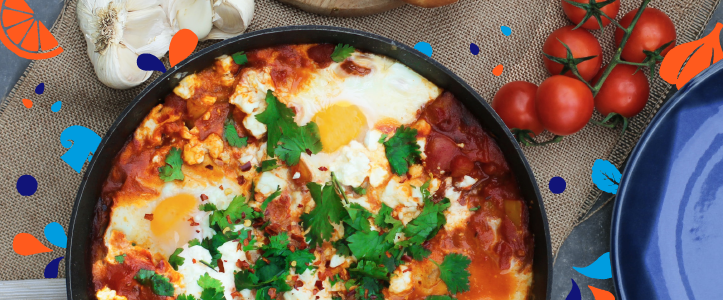
There are different types of diabetes, and no two people with diabetes are the same. So there isn’t a one-size-fits-all 'diabetes diet' for everyone with diabetes. But we’ve come up with tips that you can use to help you make healthier food choices.
These healthy eating tips are general and can help you manage your blood glucose levels, also called your blood sugar levels, as well as your blood pressure and cholesterol levels.
They can also help you manage your weight and reduce the risk of diabetes complications, such as heart problems and strokes, and other health conditions including certain types of cancers.

“Making healthier food choices is important to manage your diabetes and to reduce your risk of diabetes complications. We know that not everyone agrees on what is the best diet.
"This is why we’ve reviewed all the evidence to put these tips together. We’ve focused on specific foods, to make it easier for you to put these tips into practice and to complement whatever diet you decide to follow.”
- Douglas Twenefour, Specialist Dietitian and Head of Clinical at Diabetes UK
We've based our tips on research involving people with type 1 diabetes and type 2 diabetes diabetes. If you have a different type of diabetes, like gestational diabetesl, cystic fibrosis-related diabetes or MODY, some of these tips will also be relevant to you. It’s important, whatever kind of diabetes you have, to see your dietitian for specific advice.
You can get more advice about eating healthily with diabetes in our interactive Learning Zone, including simple and realistic food hacks you can make.
{"preview_thumbnail":"/resources-s3/public/styles/video_embed_wysiwyg_preview/public/video_thumbnails/WYhzB96EHm0.jpg?54F6VYvx6vj4nnR6Tehng0A5vVssOdVi&itok=ziHUoW7S","video_url":"https://www.youtube.com/watch?v=WYhzB96EHm0","settings":{"responsive":1,"width":"854","height":"480","autoplay":0},"settings_summary":["Embedded Video (Responsive)."]}
What does eating right mean for you?
If you have type 1 diabetes, carb counting is really important to keep your blood glucose levels steady. This is where you estimate how many carbs are in your meal and match it with how much insulin you need to take.
If you have type 2 and you’re living with overweight, finding a way to lose weight is important as it really improves diabetes management. This is because it can help to lower your blood glucose and reduce your risk of diabetes complications.
There are different ways of doing this, like the low-carb, Mediterranean or very low-calorie diets. Losing weight can help you lower your blood glucose levels, and we now know that substantial weight loss can even put some people's type 2 diabetes into remission.
Whether you have type 1 or type 2 diabetes, you might need to lose, gain or maintain your current weight but it’s important to make healthier food choices while you’re doing this.
Portion sizes are important to think about whether you have type 1 or type 2. It makes calculating nutritional facts when you’re carb counting or managing your weight a lot easier. Remember, portion sizes are different for everyone, so what’s right for someone else might not be right for you.
We also have plenty of information to help you if you feel overwhelmed about your feelings on food and diabetes.
Our top 10 tips
1. Choose healthier carbohydrates
All carbs affect blood glucose levels so it’s important to know which foods contain carbohydrates. Choose the healthier foods that contain carbs and be aware of your portion sizes.
Here are some healthy sources of carbohydrate:
- whole grains like brown rice, buckwheat and whole oats
- fruit
- vegetables
- pulses such as chickpeas, beans and lentils
- dairy like unsweetened yoghurt and milk.
At the same time, it’s also important to cut down on foods low in fibre such as white bread, white rice and highly-processed cereals. You can check food labels when you’re looking for foods high in fibre if you’re unsure.
2. Eat less salt
Eating lots of salt can increase your risk of high blood pressure, which in turn increases risk of heart diseases and stroke. And when you have diabetes, you’re already more at risk of all of these conditions.
Try to limit yourself to a maximum of 6g (one teaspoonful) of salt a day. Lots of pre-packaged foods already contain salt so remember to check food labels and choose those with less salt. Cooking from scratch will help you keep an eye on how much salt you’re eating. You can also get creative and swap out salt for different types of herbs and spices to add that extra flavour.
3. Eat less red and processed meat
If you’re cutting down on carbs, you might start to have bigger portions of meat to fill you up. But it’s not a good idea to do this with red and processed meat, like ham, bacon, sausages, beef and lamb. These all have links with heart problems and cancers.
Try swapping red and processed meat for these:
- pulses such as beans and lentils
- eggs
- fish
- poultry like chicken and turkey
- unsalted nuts.
Beans, peas and lentils are also very high in fibre and don’t affect your blood glucose levels too much – making them a great swap for processed and red meat and keeping you feeling full.
Most of us know that fish is good for us, but oily fish like salmon and mackerel are even better. These are rich in something called omega-3 oil, which helps protect your heart. Try and aim to eat two portions of oily fish a week.
4. Eat more fruit and veg
We know eating fruit and veg is good for you. It’s always a good thing aim to eat more at meal times and have them as snacks if you’re hungry. This can help you get the vitamins, minerals and fibre your body needs every day to help keep you healthy.
You might be wondering about fruit and if you should avoid it because it’s sugary? The answer is no. Whole fruit is good for everyone and if you have diabetes, it’s no different. Fruits do contain sugar, but it’s natural sugar. This is different to the added sugar (also known as free sugars) that are in things like chocolate, biscuits and cakes.
The sugar in fruit juices counts as free sugars, so go for whole fruit instead. This can be fresh, frozen, dried or tinned (in juice, not in syrup). And it’s best to eat it throughout the day instead of one bigger portion in one go.
5. Choose healthier fats
We all need fat in our diet because it gives us energy. But different types of fat affect our health in different ways.
Healthier fats are in foods like unsalted nuts, seeds, avocados, oily fish, olive oil, rapeseed oil and sunflower oil. Some saturated fats can increase the amount of cholesterol in your blood, increasing your risk of heart problems. These are mainly found in animal products and prepared food like:
- red and processed meat
- ghee
- butter
- lard
- biscuits, cakes, pies and pastries.
It’s still a good idea to cut down on using oils in general, so try to grill, steam or bake foods instead.
6. Cut down on free sugar
We know cutting out sugar can be really hard at the beginning, so small practical swaps are a good starting point when you’re trying to cut down on excess sugar. Swapping sugary drinks, energy drinks and fruit juices with water, plain milk, or tea and coffee without sugar can be a good start.
Cutting out free sugars can help you manage your blood glucose levels and help you manage your weight. You can always try low or zero-calorie sweeteners (also known as artificial or non-sugar sweeteners) to help you cut back. These can also be helpful for weight loss in the short term if you don’t swap for other foods and drinks containing lots of calories. But, in the long term, try and reduce the overall sweetness in your diet.
7. Be smart with snacks
If you want a snack, choose yoghurts, unsalted nuts, seeds, fruits and vegetables instead of crisps, chips, biscuits and chocolates. But watch your portions still – it’ll help you keep an eye on your weight
8. Drink alcohol sensibly
Alcohol is high in calories, so if you do drink and you’re trying to lose weight, think about cutting back. Try to keep to a maximum of 14 units a week. But spread it out to avoid binge drinking, and go several days a week without alcohol.
If you take insulin or other diabetes medications, it’s also not a good idea to drink on an empty stomach. This is because alcohol can make hypos more likely to happen.
9. Don’t bother with so-called diabetic food
To say food is a "diabetic food" is now against the law. This is because there isn’t any evidence that these foods offer you a special benefit over eating healthily. They can also often contain just as much fat and calories as similar products, and can still affect your blood glucose level. These foods can also sometimes have a laxative effect.
10. Get your minerals and vitamins from foods
There’s no evidence that mineral and vitamin supplements help you manage your diabetes. So, unless you’ve been told to take something by your healthcare team, like folic acid for pregnancy, you don’t need to take supplements.
It’s better to get your essential nutrients by eating a mixture of different foods. This is because some supplements can affect your medications or make some diabetes complications worse, like kidney disease.
Don’t forget to keep moving
Being more physically active goes hand in hand with eating healthier. It can help you manage your diabetes and also reduce your risk of heart problems. This is because it increases the amount of glucose used by your muscles and helps the body use insulin more efficiently.
Try to aim for at least 150 minutes of moderate intensity activity a week. This is any activity that raises your heart rate, makes you breathe faster and feel warmer. You should still be able to talk and only be slightly out of breath. And you don’t have to do all 150 minutes in one go. Break it down into bite-size chunks of 10 minutes throughout the week or 30 minutes 5 times a week.
